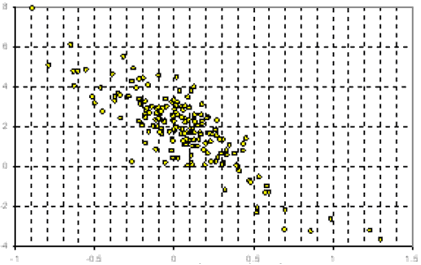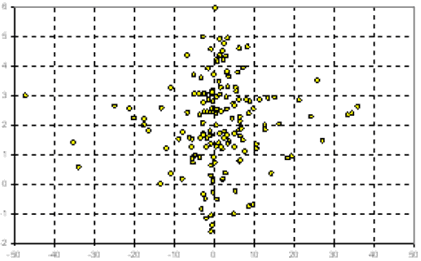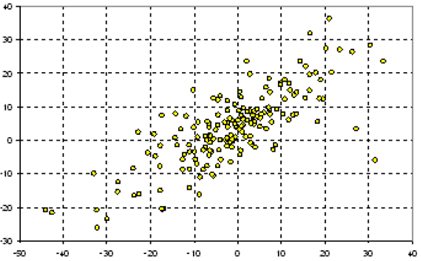November was an ugly month. As bad as they get. In this month's letter we try to explain why that was.
In particular we focus on the role of capital ratios and the effect gearing has on the financial system.
It is perhaps a little bit more technical than usual (and for that we apologise) but it is nevertheless very important in order to understand why markets behave the way they do at the moment.
MoneyWeek
Subscribe to MoneyWeek today and get your first six magazine issues absolutely FREE

Sign up to Money Morning
Don't miss the latest investment and personal finances news, market analysis, plus money-saving tips with our free twice-daily newsletter
Don't miss the latest investment and personal finances news, market analysis, plus money-saving tips with our free twice-daily newsletter
The importance of capital ratios
Let's begin by defining the term capital ratio'. For the purpose of this discussion we shall define it as the value of total assets divided by total equity capital.
For example, a person owning a £500,000 house with a £450,000 mortgage against it (assuming no other assets or liabilities), will have equity of £50,000 and a capital ratio of 10 (£500,000 divided by £50,000). If the value of the house rises 20% to £600,000, his capital ratio drops to 4 (£600,000 divided by £150,000). Now look at the following chart:
Chart 1: Total assets and gearing of U.S. households

As you can see, there is a strong inverse relationship between the value of assets and the gearing amongst private households. This study was done in the US; however, there is no reason to believe that households in other parts of the world behave differently.
As the value of your house goes up, your net worth increases and consequently your gearing goes down. Many households withdraw some of the incremental value for general consumption but few spend it all. No surprises here.
Moving our attention swiftly to the financial sector, you will note a very different pattern. Chart 2 below illustrates how commercial banks manage their balance sheets.
You will note a large number of observations through the vertical zero' line, indicating that commercial banks target a fixed capital ratio. For many banks that number happens to be around 10.
The implication of this is not to be ignored. If a bank manages it business with the objective of maintaining a steady capital ratio, a write-off in the order of $10 billion would force the bank to reduce its assets by $100 billion. This is most easily done by reducing its loan book which again explains why many banks are suddenly reluctant to lend and why LIBOR rates have sky-rocketed.
Chart 2: Total assets and gearing of U.S. commercial banks

If we go one step further and instead look at the behaviour of investment banks, an even more remarkable picture emerges. Now the correlation is clearly positive as depicted in chart 3 below.
A rise in asset prices will lead to higher gearing amongst investment banks whereas a fall in asset prices will cause these banks to reduce their gearing. If you add to this that the capital ratio for most investment banks is significantly higher than 10, it is easy to understand how falling asset prices can potentially cause a rather nasty spiral where lower prices lead to sell-offs which again lead to further weakness, etc. etc.
Chart 3: Total assets and gearing of U.S. investment banks

Source: "Liquidity and Leverage", September 2007. 1963-2006.
How bad is the current situation?
Now let's move to the current situation. Following a rather dark period since the credit crunch began in earnest in July, banks around the world have written off approximately $50 billion of toxic mortgage debt. Based on sources which we consider reliable, we believe total mortgage related losses over the same period amount to somewhere around $400 billion.
Don't trust Ben Bernanke for one second when he estimates total losses to be around $150 billion. The real numbers are much, much higher. If our estimate is correct, that leaves about $350 billion unaccounted for. However, before you jump out of the window, consider the following.
It is estimated that only' one third of all bad mortgage related debt is on the balance sheets of the world's banks. Total losses for the banking industry as a whole are therefore estimated to be about $130-140 billion. Another third belongs to insurance companies and the last third is to be found mostly amongst other institutional investors such as pension funds, hedge funds, etc.
The effect on markets Let's try to put these numbers into context. $400 billion is approximately 1% of global GDP nasty but by no means the end of the world. $400 billion is also equivalent to a really bad day for the U.S. stock market a drop of 2.5% or thereabouts. The stock market has experienced falls of this magnitude many, many times without falling into a coma.
However, going back to my earlier point about capital ratios, if banks stand to lose $130-140 billion, in order to maintain a constant capital ratio of about 10 and unless they can raise substantially new equity capital, they would have to reduce their balance sheets by $1.3-1.4 trillion, and that is a big number. That translates into about 4-5% of all debt owed by the non-financial sector to the banking industry which is enough to ignite a recession.
The sell-off in November should also be seen in this context. Most investment banks closed the books for the year on the 30th November and, over the past few weeks, they have been busy reducing the size of their balance sheets. Afraid of being left behind, commercial banks participated in the sell-off despite their fiscal year running for another month. With much of the year-end selling now behind us, we expect an improvement in overall market sentiment going forward.
Also, the two thirds of total mortgage debt related losses which belong to financial institutions other than banks are not subject to the capital ratio rule'. Hence we do not expect the same dramatic effect on the markets when these losses are announced in connection with the publication of the annual accounts sometime in the first quarter of next year.
Recession risks increase
For all of these reasons we have modified our economic outlook for 2008. Up until this point we have assigned no more than a 50% probability of recession in the U.S. in 2008 and only a modest risk of recession in Europe.
Now, with banks caught in this vicious cycle, the recession risk has risen significantly and we have raised the probability of recession (which we define as two consecutive quarters with negative GDP growth) to 65% in the US, 75% in the UK and 40% in Europe.
The financial sector's huge importance for the British economy is behind our rather more pessimistic outlook for the British economy. Adding insult to injury, Gordon Brown has painted himself into a corner with his reckless fiscal policy of recent years.
Whereas both the US and the Euro-zone can currently afford fiscal expansion to kick-start the economy, should it become necessary, Brown's heavy spending whilst in Number 11 has left a large budget deficit, defying all logic following years of solid economic growth.
Several rate cuts to come
The situation has in fact become so serious that those interest rates controlled by central banks could fall dramatically in months to come. Since Greenspan took control of the US Fed, this has been the tool favoured by most central bankers. Earlier today the Bank of England cut the rate by 25 basis points to 5.50% (the first UK rate cut since August 2005) and the Fed governors are due to meet again next Tuesday (December 11).
Expect a cut of at least 25 basis points, possibly 50, with more to come over the next 12 months. Even the ECB, despite all its macho talk about inflationary pressures, may have no choice but to reduce rates.
Since we take a fundamentally different view than most other commentators on the long-term outlook for inflation (we are more bearish than most), we are not convinced that reducing rates dramatically is the right thing to do, but the economic reality may force the hands of King, Bernanke and Trichet.
Any such action may end up causing even more pain further down the road, but that is an altogether different story which we shall revert to in a future letter.
By Niels C. Jensen, chief executive partner at Absolute Return Partners LLP. To contact Niels, email: njensen@arpllp.com
Get the latest financial news, insights and expert analysis from our award-winning MoneyWeek team, to help you understand what really matters when it comes to your finances.
MoneyWeek is written by a team of experienced and award-winning journalists, plus expert columnists. As well as daily digital news and features, MoneyWeek also publishes a weekly magazine, covering investing and personal finance. From share tips, pensions, gold to practical investment tips - we provide a round-up to help you make money and keep it.
-
 How gifting money this Christmas could lower your inheritance tax bill
How gifting money this Christmas could lower your inheritance tax billCash is an easy and quick present to give over Christmas – and it could protect some of your estate from the taxman down the line
-
 £100 contactless card limit to be lifted
£100 contactless card limit to be liftedConsumers will be able to set their own contactless limits from March 2026, under new rules from the Financial Conduct Authority

